Best Python Data Analysis Books to Buy in December 2025

Storytelling with Data: A Data Visualization Guide for Business Professionals
- MASTER DATA VISUALIZATION TECHNIQUES FOR IMPACTFUL STORYTELLING.
- UNLOCK ACTIONABLE INSIGHTS TO DRIVE INFORMED BUSINESS DECISIONS.
- ENGAGE AUDIENCES WITH COMPELLING VISUALS AND CLEAR NARRATIVES.


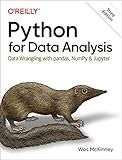
Python for Data Analysis: Data Wrangling with pandas, NumPy, and Jupyter



Fundamentals of Data Analytics: Learn Essential Skills, Embrace the Future, and Catapult Your Career in the Data-Driven World—A Comprehensive Guide to Data Literacy for Beginners (Fundamentals Series)


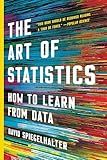
The Art of Statistics: How to Learn from Data


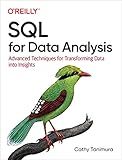
SQL for Data Analysis: Advanced Techniques for Transforming Data into Insights


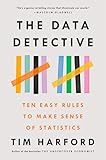
The Data Detective: Ten Easy Rules to Make Sense of Statistics



Data Analytics, Data Visualization & Communicating Data: 3 books in 1: Learn the Processes of Data Analytics and Data Science, Create Engaging Data ... Present Data Effectively (All Things Data)


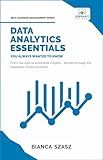
Data Analytics Essentials You Always Wanted To Know : A Practical Guide to Data Analysis Tools and Techniques, Big Data, and Real-World Application for Beginners



Data Science for Business: What You Need to Know about Data Mining and Data-Analytic Thinking


In Pandas, aggregation refers to the process of obtaining a single value as the result of a computation performed on a set of data. It involves grouping the data based on specific criteria and applying functions to calculate summary statistics or perform other computations.
To perform aggregation in Pandas, you can use the groupby function to group the data based on one or more columns. This creates a DataFrameGroupBy object that allows you to apply various aggregation functions such as sum, mean, max, min, count, std, etc.
Once you have grouped the data and applied an aggregation function, Pandas returns a new DataFrame or Series object with the aggregated result. This new object contains the computed values for each group or category.
Aggregation in Pandas allows you to efficiently summarize large datasets, calculate statistical measures, and extract meaningful insights from the data. It is often used in data analysis and data preprocessing tasks to gain a high-level overview of the data or generate specific summary information.
By using Pandas' aggregation capabilities, you can quickly answer questions such as finding the total sales per product category, calculating average scores by user groups, determining the maximum values for different subgroups, counting occurrences of specific categories, and more.
In summary, performing aggregation in Pandas involves grouping the data based on specific criteria using the groupby function and applying aggregation functions to obtain summary statistics or perform computations on the grouped data.
What is the min aggregation function in Pandas?
The min aggregation function in Pandas is used to calculate the minimum value in a given set of data. It is typically applied to a column or series in a DataFrame.
Here is an example of how to use the min function in Pandas:
import pandas as pd
data = {'A': [1, 2, 3, 4, 5], 'B': [10, 20, 30, 40, 50], 'C': [100, 200, 300, 400, 500]}
df = pd.DataFrame(data)
Using the min function to calculate the minimum value in column A
min_value = df['A'].min()
print(min_value)
Output:
1
In the above example, the min function is applied to the 'A' column in the DataFrame to find the minimum value, which is 1.
How to perform aggregation on a specific column in a groupby object with Pandas?
To perform aggregation on a specific column in a groupby object with Pandas, you can use the agg() function. Here's an example:
import pandas as pd
Create a sample DataFrame
data = {'Group': ['A', 'B', 'A', 'B', 'A', 'B'], 'Value': [10, 20, 30, 40, 50, 60]} df = pd.DataFrame(data)
Group the DataFrame by 'Group' column
grouped_df = df.groupby('Group')
Perform aggregation on the 'Value' column using agg()
aggregated_df = grouped_df.agg({'Value': ['sum', 'mean', 'count']})
print(aggregated_df)
Output:
Value
sum mean count
Group
A 90 30.0 3
B 120 40.0 3
In the agg() function, you pass a dictionary where the keys are the columns you want to perform aggregation on and the values are the aggregation functions you want to apply. In this example, we are using the 'sum', 'mean', and 'count' aggregation functions on the 'Value' column.
How to count the number of occurrences of each unique value in a DataFrame column with Pandas?
To count the number of occurrences of each unique value in a DataFrame column with Pandas, you can use the value_counts() function. Here is an example:
import pandas as pd
Create a sample DataFrame
df = pd.DataFrame({'Column1': [1, 2, 2, 3, 3, 3]})
Count the number of occurrences of each unique value in the column
counts = df['Column1'].value_counts()
print(counts)
Output:
3 3 2 2 1 1 Name: Column1, dtype: int64
The value_counts() function returns a Series object where the unique values from the specified column are the index and the corresponding counts are the values.
How to calculate the sum of a column in Pandas?
To calculate the sum of a column in Pandas, you can use the .sum() method on a specific column of a DataFrame.
Here is an example of how to calculate the sum of a column using Pandas:
import pandas as pd
Create a DataFrame
data = {'A': [1, 2, 3, 4, 5], 'B': [10, 20, 30, 40, 50]} df = pd.DataFrame(data)
Calculate the sum of column 'A'
sum_column = df['A'].sum() print("Sum of column 'A':", sum_column)
Output:
Sum of column 'A': 15
In this example, we create a DataFrame with two columns 'A' and 'B'. Using the .sum() method on the column 'A' (df['A']), we calculate the sum of its values and store it in the variable sum_column. Finally, we print the sum.
How to perform aggregation on a specific group in a groupby object with Pandas?
To perform aggregation on a specific group in a groupby object with Pandas, you can use the get_group() method to retrieve the specific group you want. Once you have the group, you can perform any desired aggregation function(s) on it.
Here's an example:
import pandas as pd
Create a sample DataFrame
data = {'Group': ['A', 'A', 'B', 'B', 'A', 'B'], 'Value': [10, 20, 30, 40, 50, 60]} df = pd.DataFrame(data)
Group the DataFrame by 'Group' column
grouped = df.groupby('Group')
Get the specific group 'A'
group_A = grouped.get_group('A')
Perform aggregation on group 'A'
result = group_A['Value'].sum()
print(result)
Output:
80
In this example, we created a DataFrame with two columns: 'Group' and 'Value'. We then grouped the DataFrame by 'Group' using the groupby() function and stored the resulting groupby object in the variable grouped.
To perform aggregation on the specific group 'A', we used the get_group('A') method on the grouped object to retrieve only the rows belonging to group 'A'. We performed the sum aggregation on the 'Value' column of this group by using group_A['Value'].sum(). The result is the sum of values in the 'Value' column for group 'A', which is 80.
What is the role of the reset_index function in Pandas aggregation?
The reset_index function in Pandas is used to reset the index of a DataFrame or a Series after aggregation. When we perform aggregation operations on a DataFrame or Series, the resulting object often has a multi-level index if grouping is involved.
The reset_index function is used to convert this multi-level index into a regular DataFrame or Series with a default integer index. It moves the index levels to become new columns in the DataFrame, returning a new object with the reset index.
By resetting the index, it provides a way to remove the hierarchical structure and reorganize the data into a tabular format, which can be helpful for further analysis or presentation.
